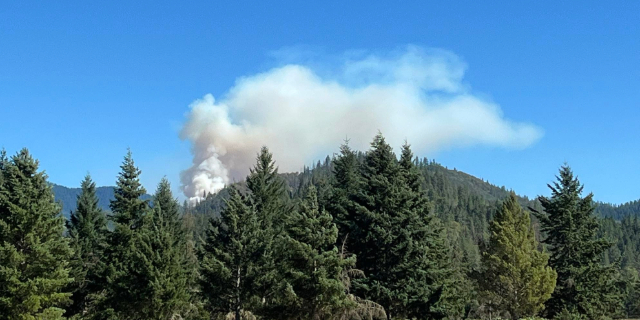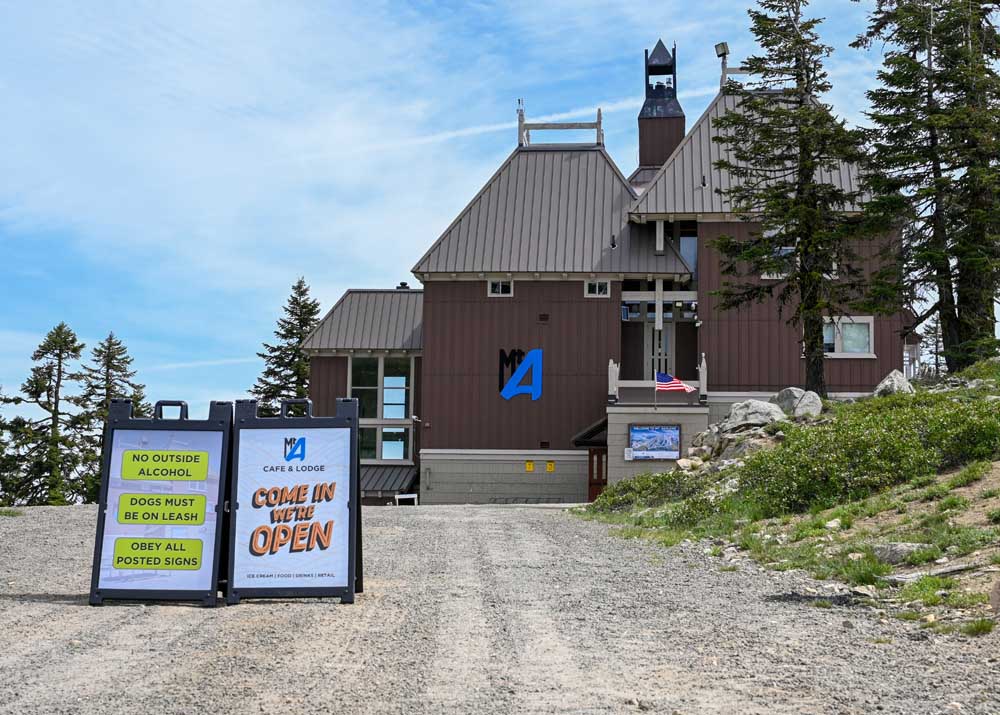Baker County to use cellphone data to track tourism, guide marketing campaign
Published 6:00 am Monday, January 27, 2025

- The National Historic Oregon Trail Interpretive Center near Baker City includes exhibits depicting the journey along the Oregon Trail.
Jessica Hobson is eager to start mining cellphone data to better understand tourists who visit Baker County — where they live, where they went and how long they stayed.
Trending
Hobson is the county’s tourism marketing director, working under the Travel Baker County moniker.
On Wednesday, Jan. 22, the Baker County Board of Commissioners voted 3-0 to hire a Utah company, Datafy, for a one-year contract for $20,500. The money comes from a local lodging tax that guests pay when they stay in motels, bed and breakfasts, vacation rental homes and other overnight accommodations.
Hobson said Datafy uses data from cellphones — there is no personal information, such as phone owners’ names — to create a variety of reports.
Trending
The basic idea, she said, is to better understand tourism in Baker County, and to use that insight to guide the county’s marketing campaigns.
For instance, do certain destinations, such as Hells Canyon, the Sumpter Dredge, the Oregon Trail Interpretive Center and downtown Baker City, tend to attract a higher percentage of visitors who live at least 50 miles from Baker County.
Hobson said she can use Datafy reports to look at events as well as destinations, such as Miners Jubilee, the Taste of Baker and the Sumpter flea markets.
Datafy tracks cellphones based on where the phone is registered, Hobson said, so she can get reports that, for instance, show how many visitors to a Baker County destination or event are from particular areas such as Portland, Seattle or Boise.
“There’s so many different options,” Hobson said. “I’m excited to just jump in and start getting data.”
Datafy records date to 2017, she said, which allows her to track tourism over several years, including before the pandemic.
The reports should allow the county to focus its marketing — the money also comes from the lodging tax — on places where residents are known to travel to the county.
Hobson said the data can also help gauge the number of people from outside Baker County who visit particular places, such as Quail Ridge Golf Course and Geiser-Pollman Park.
Commissioner Christina Witham, during a discussion among commissioners last year about a request to spend lodging tax revenue to help install a new irrigation system at the city-owned golf course, said that without detailed data about how many visitors the course attracts, it’s difficult to estimate how much the course benefits the local economy, and in particular businesses such as motels and restaurants. Witham voted against a motion to give $150,000 in lodging tax revenue to Quail Ridge. The motion passed, however, with Commission Chairman Shane Alderson and commissioner Bruce Nichols voting in favor.
Hobson said reports from Datafy should help answer Witham’s question about the golf course, as well as other destinations in the county.
Hobson said she can get some types of reports on her own.
But she will also have a dedicated employee at the company who can create more detailed reports at her request.
Hobson said her ultimate goal is to keep tourism growing in Baker County.
After a downturn during the pandemic, the county’s lodging tax revenue has risen to a record high of $954,000 for the fiscal year that ended June 30, 2024.
From 2006-19, annual revenue ranged from $385,000 to $576,000, with an average of $439,000.
Guests at motels, RV parks, vacation rental homes, campgrounds and other lodging establishments pay a tax of 7% of the rental rate.
(The state assesses a separate lodging tax of 1.5%.)
The county tax is collected in Baker City, Halfway, Sumpter and Unity, and in unincorporated parts of the county. About 60% of the total tax is paid by guests at establishments in Baker City, which has the bulk of the county’s motel rooms and many of its vacation rental properties.
Budget officer
In other business Wednesday, commissioners voted 3-0 to appoint commissioner Michelle Kaseberg, who was sworn in earlier this month, as the county’s budget officer.
Under Oregon law, the budget officer “shall prepare or supervise the preparation of the budget document.”
In the past, the commission chairman has served as budget officer, working with county department heads and the administrative services department to put together the budget.
The law does not require that the chairman serve as budget officer, nor does it mandate that a commissioner fill that role.
Witham said she believes Kaseberg, who retired at the end of 2023 after a 43-year career in banking, is better suited to serve as budget officer.
“Michelle, with her fantastic ability in budgeting and numbers, I really want her to be in that role,” Witham said.
The motion passed unanimously.
Witham has proposed more significant changes in the duties of the chairman, the only full-time commissioner.
During their Jan. 8 and Jan. 15 meetings, commissioners discussed Witham’s proposal to hire a full-time administrator to take over duties that Alderson does now, including overseeing departments, such as the road department, that aren’t managed by an elected official.
Witham also wants to reduce the chairman’s salary, which is now $96,000 per year, twice that of the two half-time commissioners. Although Witham hasn’t suggested a specific figure, she said she thinks all three commissioners should be paid about what she and Kaseberg earn now, $48,000.
The savings from reducing the chairman’s salary would cover part of the cost of hiring an administrator.
Commissioners have not taken any action on Witham’s proposal.
Several people who attended the Jan. 8 meeting opposed her proposal and said that any such changes should be decided by voters, not by the three commissioners.









